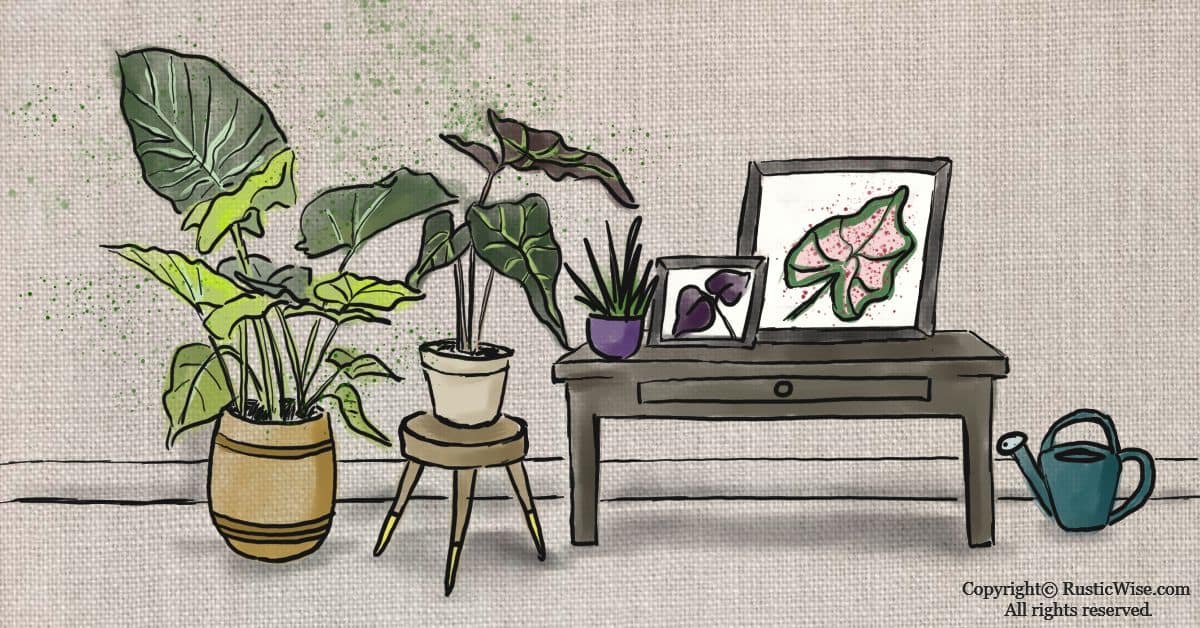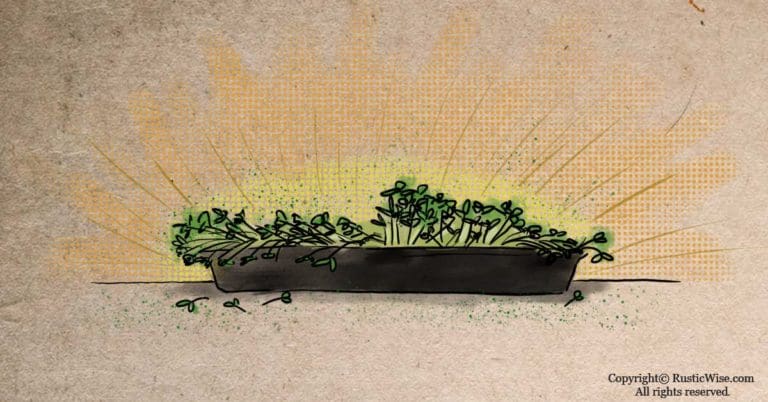How To Care for Elephant Ear Plant Indoors and Outdoors
Are you looking to add a tropical leafy plant to your home or outdoor garden? An elephant ear plant offers large, lush foliage. If you’re wondering how to care for elephant ear plant, not surprisingly, many varieties need ample space to grow, plus plenty of water and nutrients. Once they’re established, they make great houseplants or attractive additions to your landscape.
Elephant ears are tropical perennial plants in warm climates, but are grown as annuals in colder conditions. Their massive, heart-shaped leaves and overall size make them truly mighty plants to behold.
They belong to the flowering Araceae plant family. Popular ornamental varieties belong to the genera Colocasia (of Asia and India) and Alocasia (of Asia and Eastern Australia). Caladium have arrowhead-shaped foliage that are native to South America. Xanthosoma is an important food source to locals from tropical America; it’s mostly harvested for its corms.
Did you know that taro root belongs to the elephant plant (Colocasia)? Supposedly, you can try growing a taro you buy from the store (most Asian grocery stores carry them). I’ve never tried this myself, but plan to do this at some point. You may have luck sprouting an elephant plant if the corms haven’t been treated to stop growth.
Whether you’re looking to add an elephant ear plant to your collection, or already have one, here’s a guide on how to care for elephant ear plant, indoors, and out.
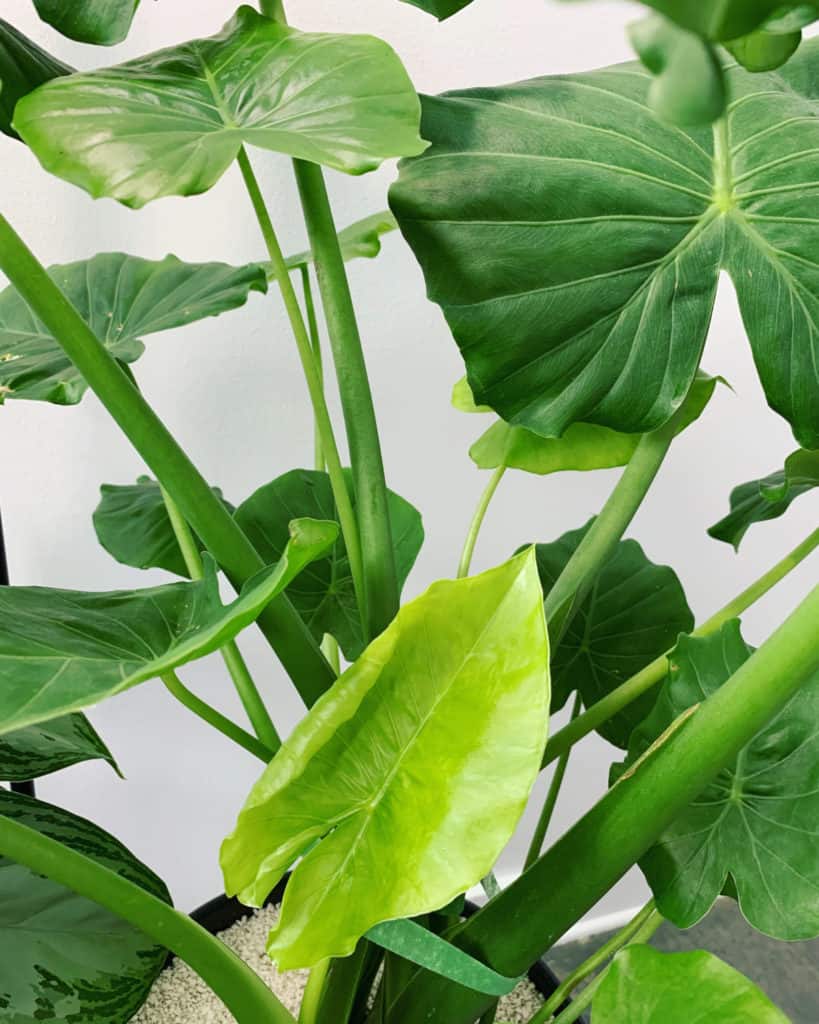
How to care for elephant ear plant indoors
Elephant ears make great indoor plants. Many houseplants are of the Alocasia (Upright Elephant Ears) variety.
One of the most critical steps in caring for elephant ear plants is giving it plenty of space to grow. This means a big pot! Aim for a pot that’s at least 15–20 inches (38–51 centimeters) in diameter to allow for healthy growth. Ensure your pot has drainage.
If you want your plant to grow larger, you could try getting an even bigger planter! Having a larger pot also helps to better retain moisture.
Most indoor elephant ear plants stay smaller than their outdoor counterparts.

Soil requirements
Use fertile potting soil that leans slightly acidic to neutral (5.5–7.0 pH) with plenty of organic material for healthy growth. The better the soil retains moisture, the easier it’ll be to keep this plant well-watered.
How often to water elephant ears
Keep your indoor elephant ear plant happy by keeping the soil moist. Having good drainage prevents root rot. Keep in mind that potted plants dry out more quickly. In hot summer months, you may need to water your thirsty plant twice a day.
During winter months, you may cut back on the watering schedule as needed.
Since elephant ear plants come from mostly tropical climates, they like humidity. So keep your humidifier cranked if needed.
How much sun do elephant ear plants need?
When indoors, elephant ear plants do well in bright indirect light. Avoid putting them in full sun as this may burn the leaves. If you have a very sunny spot, give it a few hours of shade if needed. If you find your leaves getting scorched, move the plant away from the window, or behind a sheer curtain.
Give it plenty of plant food
Elephant ear plants are heavy feeders. Keep this gentle giant healthy and strong with a slow-release fertilizer every 2–3 weeks.
Be careful—this plant is toxic!
Elephant ear plants contain calcium oxalate crystals which makes the entire plant poisonous when ingested in raw form. When ingested raw, elephant ear plants cause swelling, or a burning sensation in the mouth, throat, and/or tongue. Be careful with young children and pets.
The tubers (taro) of some varieties of elephant ear are boiled and cooked in many Asian cuisines. Taro is similar to a starchy potato. It contains vitamins A and C, and packs more protein and calcium than your average potato.
How to care for elephant ear plant outdoors
Keep in mind that elephant ear plants are tropical plants that like the warmth and can’t tolerate frost or cold. Depending on the variety, most elephant ear plants are hardy within USDA zones 8–11.
Anything outside these zones, and you’ll treat this plant as an annual. You can also dig up the tuber once the weather cools to store over winter. (More on this later, below).
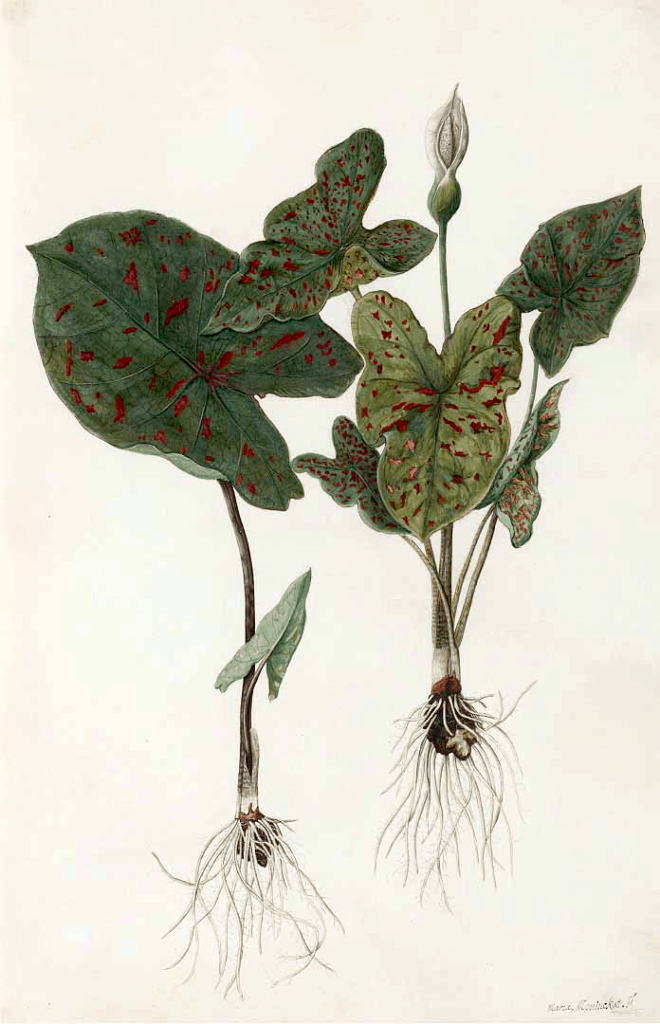
Credit: Swallowtail Garden Seeds / Flickr
How to start an elephant ear tuber indoors
If you don’t want to wait for the weather to warm up, you can get a head start on your elephant ears indoors. Start your bulbs roughly 6 weeks before the last frost.
Use rich potting soil to fill a pot. Place bulbs 1 inch deep and keep soil moist. It’s important to keep bulbs warm or they won’t sprout.
How to plant an elephant ear tuber outside
If you’re planting an elephant ear tuber outdoors, do so when any chance of frost has passed. This is usually from spring to early summer. If soil temperatures are too cold, your plants won’t grow. Wait until soil temperature reaches at least 65 degrees Fahrenheit (18 degrees Celsius).
Pick an area that receives either full or partial sun. Ideally your elephant plant receives partial shade during the day. Elephant ear varieties with darker leaves tend to do better in full sun.
- Prepare the soil: As we mentioned above, these plants love rich soil. If you have your own organic matter from compost, add some to your soil to provide your plant with a boost of nutrients. Otherwise, some organic mulch added to the top inch or so should do well. Turn the soil several inches deep and remove any debris such as unwanted rocks, or grass.
- Dig: Dig a spacious hole for each bulb, about 5 inches deep (12 centimeters). Space each bulb roughly 24–48 inches (45–60 centimeters) apart. Adjust the spacing according to the estimated size of your elephant ear plant. Space larger ones further apart, smaller varieties may be planted closer together.
- Place bulbs: Set each bulb in place (pointed side up). Cover with soil. Pat gently with your hands to replace soil. Make a small indentation around each bulb to help the plant retain water.
- Water: Give your freshly-planted bulbs plenty of water! Keep watering until a small puddle forms on the soil’s surface.
Elephant ear plant gardening tips
- Keep soil moisture levels consistent, especially during hot summer months. Keep soil moist as needed.
- Apply a layer of organic mulch to suppress weed growth and retain moisture.
- Keep these heavy feeders well-fed! Apply a rich liquid fertilizer every 2–3 weeks.
- Remove dead leaves as needed.
- Root rot: A common problem with elephant ear plants is poor drainage which leads to root rot.
- Keep an eye out for any pests or diseases:
- Root maggots
- Aphids
- Mealybugs
- Spider mites
How to store elephant ear bulbs over winter
Once temperatures drop below 50 degrees Fahrenheit (10 degrees Celsius) for a period of time, growth slows, or halts.
If you live within zones 8–11, you can keep the bulbs in the ground all winter. Otherwise, dig up rhizomes before the first frost to store them during the winter. They can be replanted again in spring.
You can either dig up the bulb to replant again next year, or keep as a container plant over winter indoors. If you’re planning on bringing your elephant ear plant indoors, make sure you get a large enough pot. Large plants need large pots—5 gallons or more.
Remember to bring them inside well before temperatures drop below 40 degrees Fahrenheit (4 degrees Celsius). Trim all leaves leaving the top two. Keep in a warm, sunny location indoors to enjoy all winter long. When elephant ear plants are kept indoors for the winter, they’re in a semi-dormant state and require less watering.
To store bulbs over winter:
- Dig up bulbs with a small trowel. Dust off any excess soil.
- You’ll need a box filled with wood peelings or peat moss. Place bulbs in an uncovered box.
- Store indoors in a dark, dry location where the temperature stays between 50–60 degrees Fahrenheit (10–15 degrees Celsius).
Good elephant ear cultivars
There are so many interesting and beautiful elephant ear cultivars. Here’s just a few:
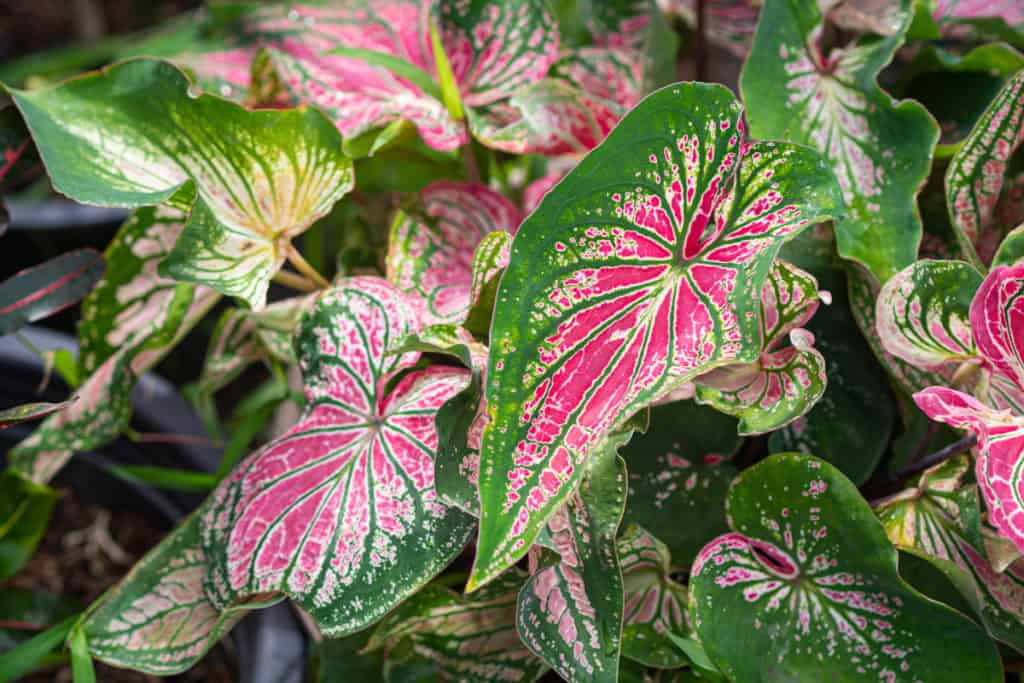
Credit: Deposit Photos
Dasheen or Green Taro (C. esculenta): One of the most common cultivars, Dasheen is grown mostly for its matte-green foliage. This is the variety that produces an edible taro root.
Pink China (Colocasia): A particularly hardy variety that does well even in colder climates. No, this cultivar doesn’t have pink leaves. It gets its namesake from its pink stems.
Thailand Giant Strain (C. gigantea): Looking to make a BIG splash outdoors? Check out this massive plant with bluish-green leaves that can each span 4 feet wide and 5 feet long. Some plants may reach heights of up to 10 feet tall. When kept well-fed and watered, this cultivar grows quickly.
Royal Hawaiian® Collection: This collection of Colocasias is designed to withstand diseases and thrive in full sun. They do well in both containers and gardens. Many have gorgeous leaf markings and colors:
- Blue Hawaii: Blue-purple veining on large green leaves.
- Maui Sunrise: Glossy green leaves with bright white-yellow veining.
- Black Coral: Large glossy black leaves with blue-purple veins.
Angel Wings (Caladium bicolor): A great cultivar if you want a splash of color. Leaves come in various shades of green, and have a touch of pink, white, or red. Suitable for partially shady areas (avoid full sun as leaves tend to scorch).
Alocasia Amazonica: You’ve probably seen this plant while scrolling on Instagram or Pinterest. This is a popular indoor cultivar which is a hybrid of Alocasia longiloba and Alocasia sanderiana. Does well in bright, indirect light. With its lovely, deep-green arrowhead leaves and white veins, it adds a nice tropical touch. Grows up to 2 feet tall.
FAQs: how to care for elephant ear plant
How big do elephant ear plants grow?
A large cultivar aptly named the Thailand Giant (C. gigantea) can have thick stalks 6 inches (15 centimeters) wide and leaves that span 2–4 feet (0.6–1.2 meters) in length. The plant may grow between 5–10 feet (1.5–3 meters) tall.
Can elephant ear plants grow in water?
Yes, certain varieties of Colocasia elephant ear are found growing along the edges of ponds in water that’s several inches deep. They make a stunning addition to a water garden.
Why are the leaves falling from my elephant plant?
Don’t worry if you notice your elephant plant shedding foliage. It’s natural for plants to shed their old leaves. But don’t fret. Your elephant ear plant continues to produce new leaves during active growing seasons.
How long do elephant ear bulbs take to sprout?
It takes anywhere from 3–8 weeks for an elephant ear bulb to sprout. You can find elephant ear bulbs from most greenhouses and some hardware stores like Home Depot. Elephant ear bulbs need warm temperatures and warm soil to sprout. If temperatures are cooler in your area, it’ll take a bit longer for your bulb to grow. For a head start on the growing season, you can start your bulb indoors several weeks before the last frost.
References:
- North Carolina Extension Gardener, Plant Toolbox, Colocasia, https://plants.ces.ncsu.edu/plants/colocasia/. Accessed March 2021.
- Wisconsin Horticulture Division of Extension, Elephant Ears (Colocasia, Alocasia, and Xanthosoma), https://hort.extension.wisc.edu/articles/elephant-ears-colocasia-alocasia-and-xanthosoma/. Accessed March 2021.

Author: Josh Tesolin
Josh is co-founder of RusticWise. When he’s not tinkering in the garden, or fixing something around the house, you can find him working on a vast array of random side projects.

